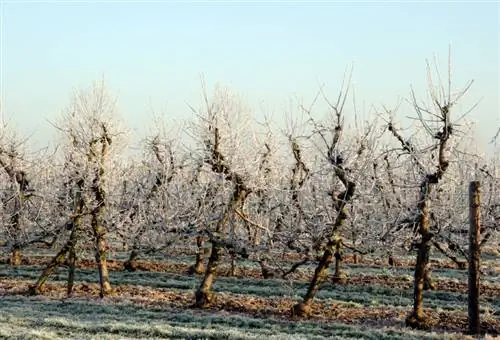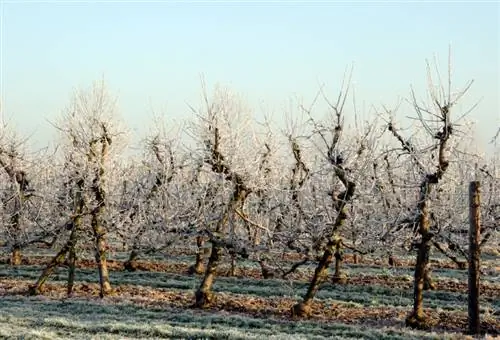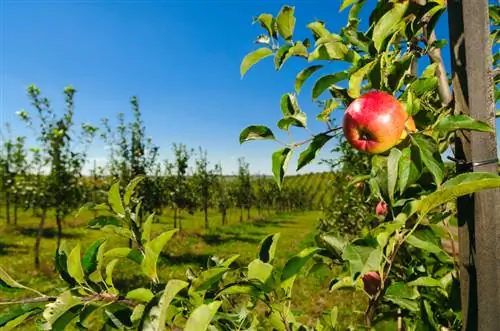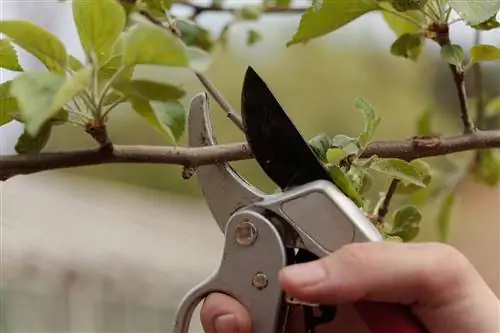- Author admin [email protected].
- Public 2023-12-16 16:46.
- Last modified 2025-01-23 11:19.
Not every garden is sufficiently sized for growing fruit on large fruit trees. Nowadays, there are also varieties in specialist shops that can be used to use even a small apple tree to harvest juicy apples.

How can I grow a small apple tree in the garden or on the terrace?
A small apple tree is suitable for small gardens or terraces and can be successfully grown and kept productive through targeted selection of varieties and trunk shapes, regular pruning and control of the growth direction of the branches.
Choosing the right tree
First of all, apple trees grown from cores are rather unsuitable for small gardens or terraces. Since these trees usually revert to a wild form, they have a large root system and also tend to form a large tree crown. However, there are numerous stock forms available commercially that are suitable for cultivation in pots or as espaliered fruit.
Get growth on the right track in a timely manner
The decision for a small apple tree should already influence the selection of variety and trunk shape. Apple trees with standard trunks are not particularly suitable for this, as the way they are cultivated means they have a very high level of branching in the tree crown. Bush-shaped specimens are more suitable for growing a small apple tree, but at most they are grafted onto a half-trunk. Depending on the variety, these can still produce a not necessarily small harvest.
The targeted cut is important
Regular pruning of the apple tree is very important not only for the growth habit, but also for a consistently high yield. However, as with other fruit trees, you should pay attention to the right time for pruning. The ideal period for the apple tree is between January and March, as the buds have not yet sprouted and the tree has a reduced sap flow. However, the temperatures when cutting should not be below five degrees below zero, otherwise poor wound healing can occur.
Shaping branches for a high yield
Many apple varieties tend to let their branches grow into a narrow canopy. A thinning cut ensures that enough light reaches the individual leaves in the treetop. In this way, the fruits can also be supplied with enough energy and have a sweet taste. Ideally, the individual branches should protrude from the almost vertical tree branches at an angle of at least 35 degrees. If the branches are arranged too steeply upwards, they will not be able to withstand the load of ripening apples and, in the worst case, will even break off. With the following tools (€16.00 on Amazon) branches can be directed downwards in their growth direction:
- by tying it down with strings
- by hanging small weights
- with a targeted cut
Tips & Tricks
Apple trees are also popular trees among bonsais because of their flowers and fruits. To grow a proper bonsai, however, a wild form such as a crab apple must be chosen. The large fruits of cultivated apple varieties would appear disproportionately large on a bonsai.






